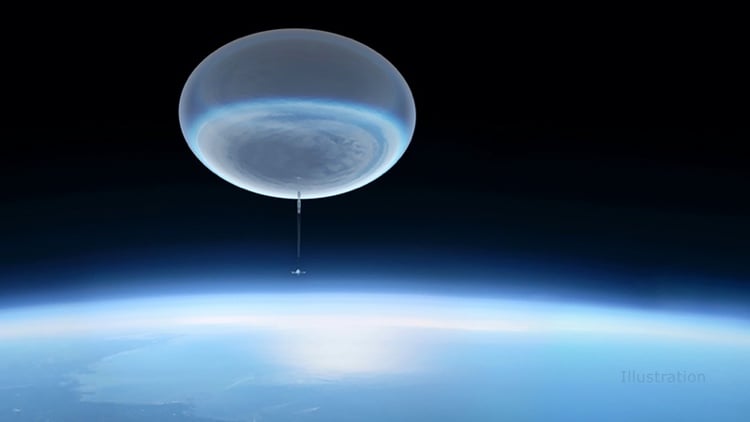NASA sends stadium-sized balloons to the sky to explore the cosmos
NASA is working on an ambitious new mission that will send a state-of-the-art 2.5-meter telescope high into the stratosphere aboard a balloon the size of a football stadium. The US space agency said on Thursday. ASTHROS (short for Astrophysics Stratospheric Telescope for High Spectral Resolution Observations at Submillimeter-wavelengths), will observe wavelengths of light that are not visible from Earth. The launch is scheduled for December 2023 in Antarctica, where the balloon will drift on air currents over the continent.
ASTHROS uses a telescope to observe wavelengths of light

ASTHROS will observe far infrared, or i.e. Light with wavelengths that are much longer than what is visible to humans. This means that it has to reach a height of about 40 kilometers – about four times higher than that of commercial aircraft. This is still below the boundary of space (about 100 kilometers above the surface of the earth), but it will be high enough to observe wavelengths of light blocked by the Earth’s atmosphere, NASA says.
An instrument on board will measure the movement and speed of gas around newly formed stars. The mission will explore four main objectives, including two star-forming regions in the Milky Way. It will also map the presence of two types of nitrogen ions that can “uncover locations where massive star winds and supernova explosions have transformed the gas clouds within these star-forming regions,” NASA said.

A process called stellar feedback can hinder or block star formation. On the other hand, stellar feedback can also cause material to clump together and star formation to accelerate. The team hopes to learn more about how stellar feedback works and offer new information that will improve computer simulations of galaxy evolution.
The start is scheduled for December 2023

The team recently completed the design of the observatory payload, including the telescope that captures the light and subsystems such as cooling and electronic systems. NASA’s Jet Propulsion Laboratory, which will lead the mission, will begin testing these subsystems in early August to ensure that they are working as intended.
Balloon missions not only have the advantage that they cost less than space missions, but the time between planning and deployment is also shorter, according to NASA. Balloon missions offer the opportunity to overcome unknown technical or operational challenges and to help future missions make the best use of these technologies.
“Balloon missions like ASTHROS are riskier than space missions, but bring high rewards at low cost,” said JPL engineer and project manager Jose Siles in the press release. “We aim for astrophysical observations that have never been attempted before. The mission will pave the way for future space missions by testing new technologies and educating the next generation of engineers and scientists. ”
Here you can read the entire press release from NASA.
The post NASA sends stadium-sized balloon to the sky to explore the cosmos appeared first on Deavita.com | Living ideas, design, hairstyles, make-up, lifestyle, health and beauty tips.





















